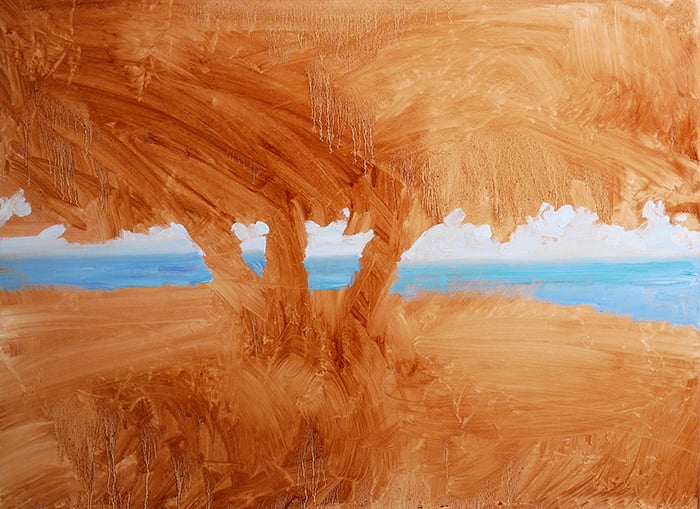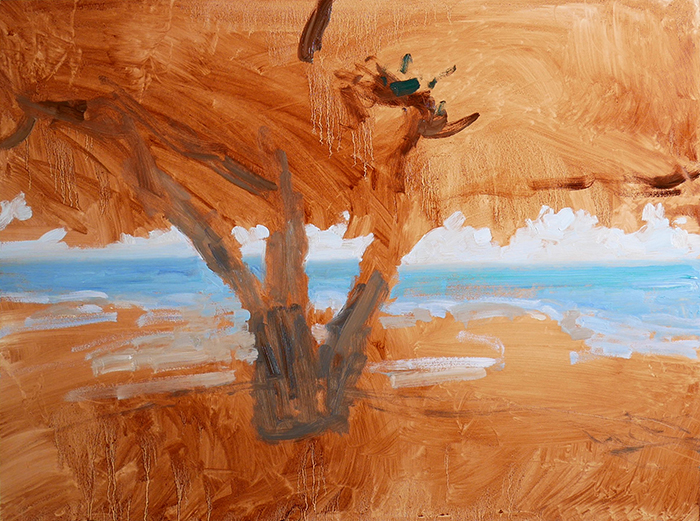Below is Wellington Point, High Contrast. This was a fun one. It’s a play of broken color and contrast.

Reference Photo and Study
Here’s the reference photo:

Feel free to try and paint it for yourself. Just let me know how you go.
Details
- Oil on Ampersand gessoboard. 18 x 24 inches.
- Main colors: Transparent brown oxide, ultramarine blue, cobalt blue, cadmium red, alizarin crimson, cadmium yellow, cadmium yellow deep, viridian green, and titanium white.
Refer to my supplies list for more details on what I use.
Notes
- The tree and its cast shadow are linked. This is a form of simplification. Instead of two distinct elements, we have one larger one.
- The big idea of this painting is color contrast. The high key background against the dark foreground. Much like Claude Monet’s Juan-Les-Pins.

- Most of my time was spent painting the leaves at the top. I built up many layers of broken color, using all kinds of techniques. Dabbing, lifting, scraping, multicolored strokes… anything to get the desired effect.
- The thick texture creates tiny cast shadows on the painting. This is known as raking light. It adds an interesting dimension to the painting.
Progress Shots
Step 1: Stain the canvas with transparent brown oxide.

Step 2: Lift paint to suggest basic shapes.

Step 3: Work on the negative shapes (the sky and sea).

Step 4: Start on the sand and tree.

Step 5: Add rich greens.

Step 6: Render the tree trunk and main branches.

Step 7: Block in the rest of the sand and foreground.

Step 8: Block in the rest of the tree.


Step 9: Add dabs of blue to suggest gaps between the leaves.

Step 10: Build up layers of broken color. Then refine.

Step 11: Photograph the finished painting.

Additional Resources
Thanks for Reading!
Thanks for taking the time to read this post. I appreciate it! Feel free to share with friends. Want to learn more about landscape painting? Check out my Landscape Painting Masterclass.
Happy painting!
Dan Scott






